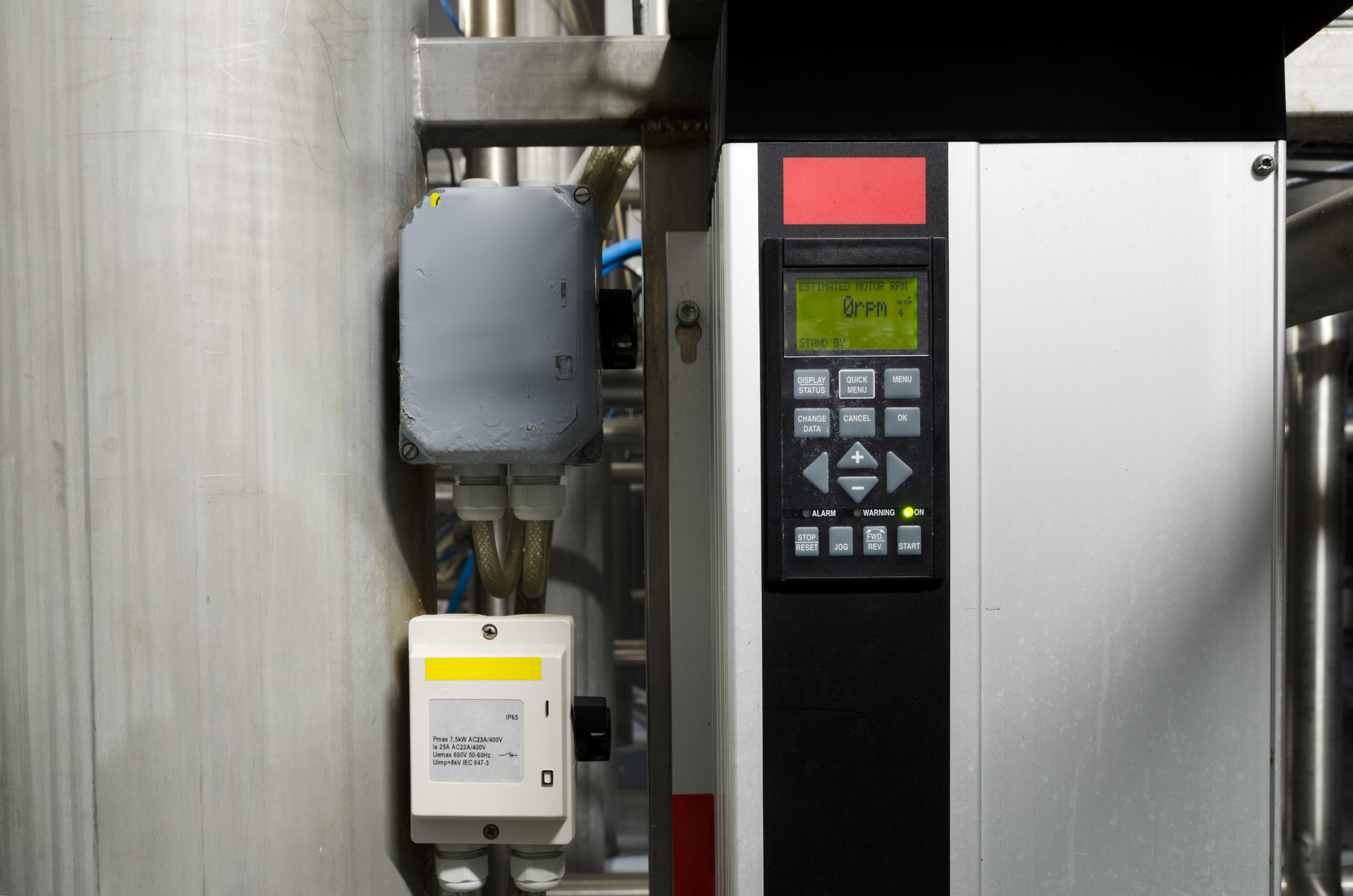What is a Variable Frequency Drive
What is a Variable Frequency Drive?
In a world driven by technological advancements, where efficiency and precision are paramount, exploring the systems that enable us to optimize various industrial processes becomes crucial. Among the marvels of modern engineering, a technology that stands out is the variable frequency drive (VFD). With its ability to regulate the speed and torque of electric motors, the variable frequency drive has revolutionized how we control and harness power in various applications.
From large-scale industrial plants to commercial buildings and even our everyday appliances, the impact of variable frequency drives can be witnessed in every corner of our modern society. Understanding their workings, applications, and benefits is essential for engineers, maintenance professionals, and curious minds alike.
In this comprehensive blog, we will embark on a journey through the intricate world of variable frequency drives. We will explore their underlying principles, delve into the differences between a VFD motor and a normal motor, and dive into the many industries that rely on this groundbreaking technology. So, get ready to embark on a journey of knowledge expansion as we delve into the enigmatic realm of this extraordinary innovation.

FAQ
What is a variable frequency drive (VFD)?
A variable frequency drive (VFD), also known as an adjustable frequency drive or variable speed drive (VSD), is an electronic device used to control the motor torque and speed of an ac induction motor or electric motor. It achieves this by varying the frequency and voltage of the electrical power supplied to the motor.
A VFD typically consists of three main components: a rectifier, a DC bus, and an inverter. The rectifier converts the incoming AC power into DC power, which is then stored in the DC bus capacitors. The inverter takes the DC power from the bus and converts it back into AC power, but with a variable frequency and voltage output. This adjustable output is then fed to the motor, allowing precise control over its speed and torque.
By adjusting the frequency and voltage supplied to the electric motor, VFDs provide smooth and step-less speed control, allowing motors to operate at different speeds to match the requirements of specific applications. This flexibility enables energy savings, improved process control, reduced mechanical stress, and enhanced equipment protection.
VFDs find applications in various industries, such as manufacturing, HVAC (heating, ventilation, and air conditioning), water treatment, pumps, conveyors, fans, and many more. They offer a versatile and efficient solution for optimizing motor performance and energy consumption, making them an essential component in modern industrial and commercial systems.
What is the difference between a VFD motor and a normal motor?
A VFD motor, also known as an adjustable speed or inverter-duty motor, differs from a normal motor in several key aspects. Let’s explore the various differences between these two types of motors:
Speed Control
One of the most significant distinctions between a VFD motor and a normal motor lies in their speed control capabilities. A VFD motor allows precise and adjustable control over the motor’s speed. By adjusting the frequency and voltage supplied to the motor, a VFD can modulate the motor’s rotational speed to match specific application requirements. On the other hand, a normal motor operates at a fixed speed determined by the power supply frequency.
Energy Efficiency
VFD motors are known for their superior energy efficiency compared to normal motors. The ability to adjust the speed of the motor according to the load demand enables VFD motors to operate at optimal efficiency levels. By reducing the speed when less power is required, VFD motors significantly minimize energy consumption, resulting in substantial energy savings. In contrast, normal motors run at a fixed speed regardless of the load, which can lead to energy wastage in applications where variable speed control is necessary.
Torque Control
VFD motors offer precise control over torque output, allowing for better control and response in various applications. By adjusting the voltage and frequency supplied to the motor, a VFD can regulate the torque produced, ensuring smooth acceleration and deceleration and precise torque adjustments during operation. On the other hand, normal motors have limited torque control capabilities since they operate at a fixed speed and typically provide a constant torque output.
Motor Protection
VFD motors incorporate advanced protection features that enhance motor reliability and longevity. VFDs monitor and protect the motor against various electrical faults, such as overvoltage, undervoltage, overcurrent, and excessive temperature. These protective measures help prevent motor damage and extend its lifespan. In contrast, normal motors typically rely on external protective devices, such as circuit breakers and thermal overload relays, for motor protection.
Application Flexibility
VFD motors offer greater versatility and adaptability in a wide range of applications. The ability to adjust speed and torque make them suitable for applications that require variable speed control, precise positioning, or speed regulation. VFD motors find extensive use in industries such as HVAC systems, manufacturing processes, pumps, conveyors, and many others. While reliable for fixed-speed applications, normal motors may lack the flexibility and efficiency required in dynamic environments.
What are the benefits of using a variable frequency drive?
VFDs offer numerous benefits compared to v/f control motor speed regulation. These benefits include smoother motor speed regulation, reduced weight, lower cost, and improved safety. Furthermore, VFDs possess additional advantages such as compatibility with various types of AC motors, faster load step tracking capability compared to v/f control systems, absence of harmonic production that could adversely affect downstream equipment, built-in overload protection, integration with security systems for remote start functionality, and elimination of the need for an external v/f converter.
What is the disadvantage of variable frequency drive?
While VFDs offer numerous advantages, they have a few disadvantages compared to V/F control systems. Firstly, VFDs have limitations in providing high starting torques since their maximum torque output relies on the capabilities of the VFD motor. In contrast, V/F control systems excel at high torques because they utilize variable frequency square wave voltage output through V/F converters. However, VFDs can overcome this drawback by incorporating v/f conversion circuitry alongside their simple variable frequency AC output.
Additionally, VFDs cannot provide v/f conversion in scenarios where a high-frequency AC supply is unavailable. V/F control systems have an advantage in such cases as they can operate on DC power through v/f converters. To increase motor starting torque, v/f converters can be added to V/F control systems, but it is crucial to ensure that the v/f converter’s DC power input matches that of the VFD’s v/f converter.
When should I install a variable frequency drive?
Installing VFDs should be considered when seeking optimal performance from an AC motor. This is particularly applicable to older motors, as VFDs can unlock performance levels beyond the capabilities of the original equipment. Moreover, VFDs are instrumental in automating AC processes and enhancing speed regulation, making them a valuable addition to industrial applications.
In industrial settings, the installation of VFDs serves multiple purposes. Users are free to select desired motor speeds, providing flexibility and control. Simultaneously, process manufacturers can improve energy efficiency by aligning the motor speed with the optimal electrical frequency, resulting in significant energy savings. Additionally, VFDs operating at the same frequency as the power supply eliminate the need for frequency conversion, reducing power consumption and supporting enhanced energy efficiency. Some VFDs even offer electrical network isolation, effectively protecting affected networks by isolating them from others, thereby contributing to increased safety measures for manufacturers.
Can I put a variable frequency drive on any motor?
A VFD, which provides variable speed control, is compatible with most AC motors. However, there are exceptions regarding certain types of AC motors that are not suitable for VFD use.
Motors that require high starting torques are not compatible with VFDs. Additionally, VFDs cannot be utilized to operate induction motors or AC induction motors due to the variable frequency output produced by the VFD, which does not offer smooth variation. Only synchronous AC motors can be effectively controlled by VFDs. It is important to note that VFDs should never be used with DC motors.
Furthermore, the general recommendation from VFD manufacturers is to utilize VFDs with three-phase motors. While VFDs can be employed with single-phase motors, there may be better choices for speed control. However, if necessary precautions and protection measures are implemented, VFDs can still function with single-phase power supplies.
Do all motors need a variable frequency drive?
No, not all motors require a VFD. The need for a VFD depends on the specific application and the desired control over motor speed. Some motors may not require a VFD, such as those used in simple on/off applications or requiring constant speed operation. In these cases, a motor starter or a basic control mechanism may be sufficient.
VFDs are typically used in situations where variable speed control, precise acceleration and deceleration, or energy efficiency is desired. Applications such as pumps, fans, conveyors, HVAC systems, and industrial processes often benefit from using VFDs to optimize motor performance and energy consumption. VFDs are also commonly employed with older AC motors to achieve improved performance and in scenarios where automation of an AC process or enhancement of speed regulation is required.
Furthermore, VFDs allow users to select and control the desired speed of their motors, providing flexibility in motor operation. They empower process manufacturers to enhance energy efficiency by aligning motor speed with an optimal electrical frequency.
Does a variable frequency drive control voltage or current?
Variable Frequency Drives (VFDs) primarily control the frequency and voltage supplied to the motor, which indirectly affects the motor’s current. The VFD adjusts the frequency of the electrical power supplied to the motor, which consequently determines the motor’s speed. As the frequency changes, the VFD also adjusts the voltage to maintain a proper voltage-to-frequency (V/f) ratio for optimal motor performance.
By modulating the frequency and voltage, the VFD effectively controls the speed and torque output of the motor. As the speed and load requirements change, the VFD adjusts the frequency and voltage accordingly to maintain the desired motor performance.
It is important to note that VFDs do not directly control the current flowing through the motor. Instead, the VFD indirectly influences the current by adjusting the voltage and frequency. As the motor’s speed and torque requirements change, the motor draws varying amounts of current based on its mechanical load characteristics and the V/f control provided by the VFD.
